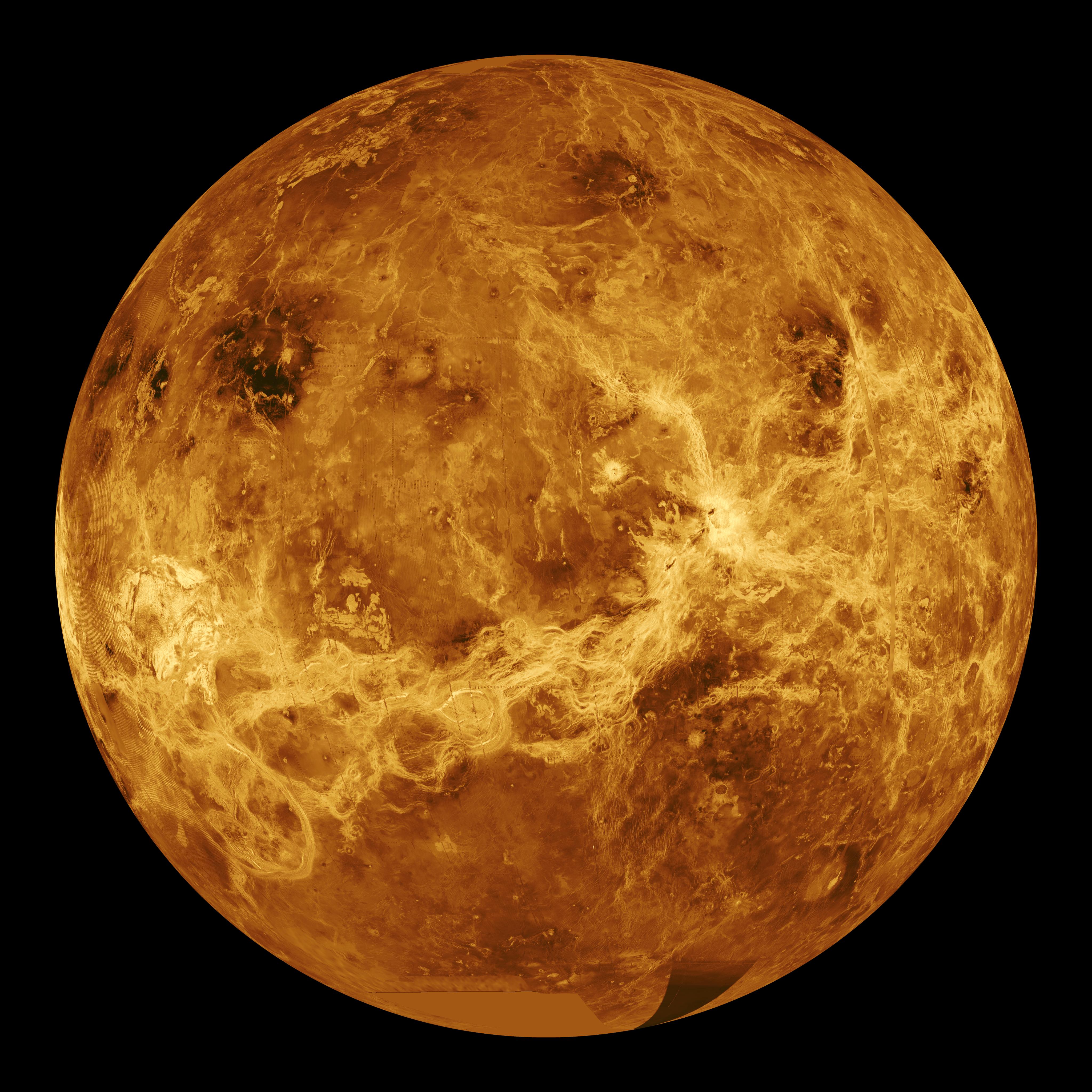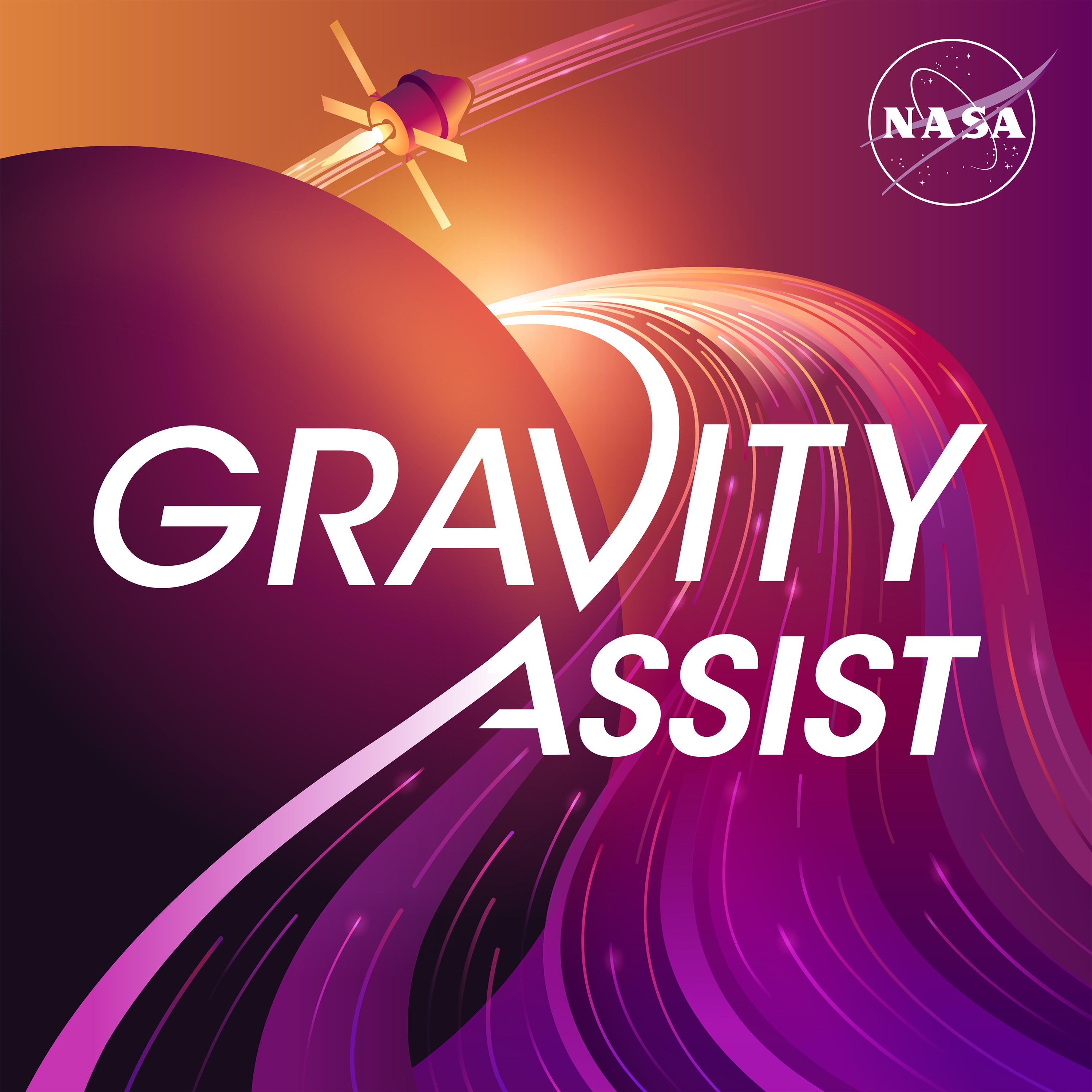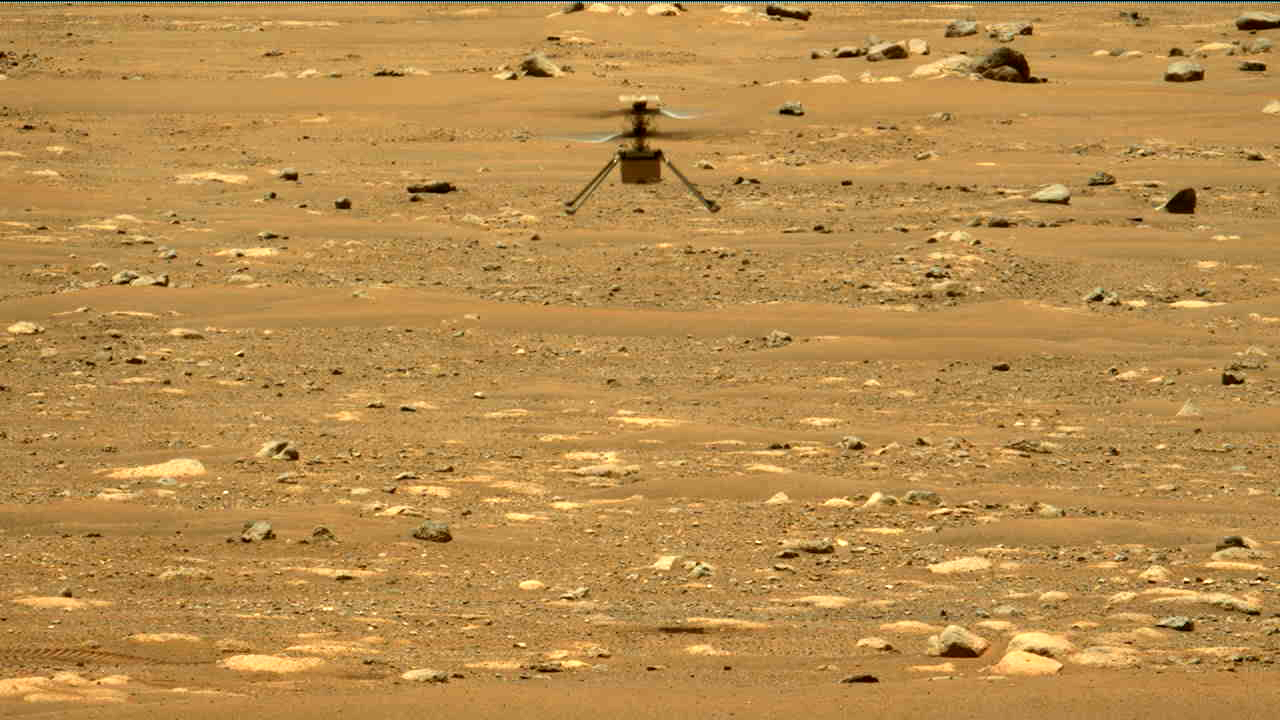
The idea for NASA’s Mars Ingenuity helicopter began at the Jet Propulsion Laboratory with a team of dedicated engineers who believed in something seemingly impossible. MiMi Aung served as the project manager on the helicopter, which has now achieved nine flights on Mars. In this episode of Gravity Assist, she shares the history of the helicopter project as well as her secrets for leading groups of people to accomplish things no one has ever done before.
Jim Green:We know how to land a rover on Mars. But what does it really take to fly a helicopter on the red planet? It takes Ingenuity.
Jim Green:Hi, I’m Jim Green. And this is a new season of Gravity Assist. We’re going to explore the inside workings of NASA in making these fabulous missions happen.
Jim Green: I’m here with MiMi Aung. And Mimi is the lead engineer on the Mars Ingenuity helicopter, developed and managed out of Jet Propulsion Laboratory in Pasadena, California. Welcome, MiMi, to Gravity Assist.
MiMi Aung: Thank you, Jim. It’s really great to be here.
Jim Green:So when you were young, what were your childhood dreams?
MiMi Aung:Well, you know, I grew up, you know, different parts of the world. Right. So, I mean, I was born here a while my, you know, in the U.S, while my parents were, you know, getting their PhDs. And then when we went back to Burma, Myanmar, and, you know, I grew up there. My formative years. And then I moved to, we moved to Malaysia, you know, I had further and I had my education was always progressing along there. And then I came back to the U.S. So just being you know, all over the world, it wasn’t clear to me if I would ever have a chance, you know, to explore space. I mean, but one thing that always fascinated me wherever you are, which, regardless of what part of the globe you’re in, you can always see the sky, the stars, and the fundamental question, you know, of, you know, what’s out there? Is there life elsewhere. Are we alone? That’s the question that I’ve always had.
Jim Green: You studied electronic engineering at the University of Illinois in Champaign-Urbana, where you earned a bachelor’s and then a master’s degree. How did you go from there to Jet Propulsion Laboratory?
MiMi Aung:When time came to look for my first job, and that was exciting, right, you’ve been in school all your life.
Jim Green: Right. (laughs)
MiMi Aung:And, and one of the professors said, you know, NASA Jet Propulsion Laboratory, you know, they have the Deep Space Network that tracks these tiny little signals with, you know, large antennas and extremely low-noise amplifiers that actually, you know, let you amplify the signals, which after that, you have to process very carefully, you know, to retrieve the signals. And that comment really connected me back, you know, to what I really loved studying, right, really the signal processing algorithms and the communication systems, and then the idea of Deep Space Network and tracking these tiny little signals in deep space. Anyway, that got me to say, “I am going to get an interview with that place.”
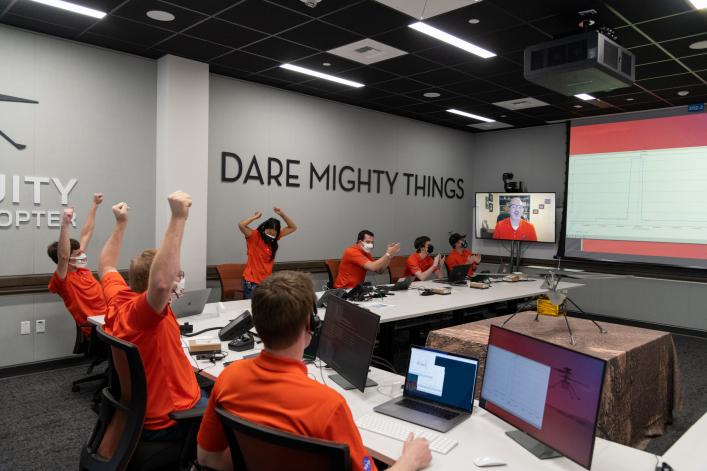
Mimi Aung:And the University of Illinois hosts, you know, recruiting groups, right, from all the different companies, different agencies, and JPL was there. They had a little star system with, you know, gold and silver, and, you know, I don’t know how many colors, but it was all the gold stars I could stick on to get an interview with JPL. And I did. (laughs)
Jim Green:(laughs)
Mimi Aung:And that’s how it started. And I can tell you, Jim, the day, I clearly remember that day, it’s been now, you know, over 30 years, that interview, but when I walked in on lab, and all the conversations, I remember who I talked to, very clearly, and it was just magic, you know. Once I walked in, and the kinds of work that was being done at NASA JPL and I could see all the different places where I can apply, pursuing, doing things that, you know, you have dreamed of doing until then.
Mimi Aung:Driving down that Oak Grove Drive, right? Like that feeling of, “I’m driving into the Jet Propulsion Laboratory, I can’t believe it.” That feeling? It really never went away. I mean, just the other day, right. I mean, now we’re, you know, working remotely. But going back on lab, I have the same feeling. And I’ve had it like, every day that I drive in. And so anyway, it really has been a dream come true. And I’ve enjoyed it for three decades. 30 years!
Jim Green:Well, you know, the Deep Space Network, as you, as you’ve already noted, is just tremendous capability for not only NASA, but for the nation. I mean, it is our way of communicating with all our probes. So what were some of the kinds of projects that you did, what did they assign you to do?
MiMi Aung: All right, well, this answer is gonna date me. But (laughs)…
MiMi Aung: This was 1990. When I was arriving, the DSN, the Deep Space Network, was just putting in their first digital receiver. They were replacing the analog receivers with a digital receiver. So I joined the Block-V Receiver group, which is the first digital receiver. And, and by the way, Block-V Receiver is still operational in the field today. So you can imagine that as the signal processing engineer, right, it’s just a dream come true.
MiMi Aung: So I was an analyst in the signal processing communications area for the Block-V receiver with, I was in the team. We designed the algorithms, and then when they got implemented into the hardware and the software, and then we you know, after that team implemented it, we did the integration and test, and then followed all the way through deployment into the DSN, you know, across in California, in Madrid, Spain, and Canberra, Australia. And it was just, it was just fantastic to see, get a chance to participate all the way from the algorithms, and then really participate through the implementation all the way to deployment and making a system work.
MiMi Aung:I’ve been to all the complexes and I, I love the DSN. That was my initial home, so to speak. Yes.
Jim Green: Yeah, well, you’ve managed so many teams that have done enormous amount of important work for, for the nation and for NASA. What’s your secret in building these teams?
MiMi Aung:Well, I think the first secret, I think you have to be truly passionate, passionate about the cause that the team is pursuing, you know, whether in my case, it’s been the Mars helicopter or autonomous system capabilities for the future. It’s definitely not a, you know, 9 to 5 job. And I really believe in having team members that believe and are as passionate as I am. And really, once you enroll them, so I always say, you know, “I’m enrolling you deep down to your heart,” and people look at me funny, but I think after people who work with me after a while, get what I’m saying. Because then what we do is, I really also respect every person. There is no hierarchy in terms of importance of what you can contribute. And there is no hierarchy on how easily you can also bring the entire system down.
MiMi Aung:I really believe in diversity, the technical diversity, and the technical responsibility. And there is no hierarchy, which means everybody really needs to respect the system, and everybody has to respect everybody else. Otherwise, you know, the kinds of systems we do here at NASA, and you know, and myself personally in JPL, they are not things that are straightforward by any means. And, and so you really have to respect every single discipline. And so I think my secret sauce is: Have passion, respect what everybody’s bringing to the table, and then, you know, really expect the excellence, the best of yourself and all the teammates. And I really think you can make, you know, really, really, really big things happen.
Jim Green:Yeah, magic happens when that occurs.
Jim Green:I’d also heard that you worked on the Psyche mission, you know, and that’s that fabulous spacecraft going to a really unique asteroid that may be a metal core. So what was your contribution on Psyche?
MiMi Aung:Yeah, Psyche is, you know, fabulous mission. And, you know, in addition to the primary goal, to go to Psyche, right to the asteroid, they are also hosting a new technology, Deep Space Optical Communications, a technology demonstration package. And so, now, they are two different objectives, you know, two different projects, so to speak, that come together on the same flight system. And so my contribution was to join, and to be the accommodation manager on Psyche, to accommodate the Deep Space Optical Communication. And that was a perfect position for me, because, you know, Jim, we were just talking about my fundamental belief in getting new capabilities infused into future missions. And whenever there is a deep space mission, it is the ultimate platform, right, for a technology demonstration opportunity to mature a technology. And so, again, the optical comm getting demonstrated in deep space, for the first time, making this successful, I was definitely motivated.
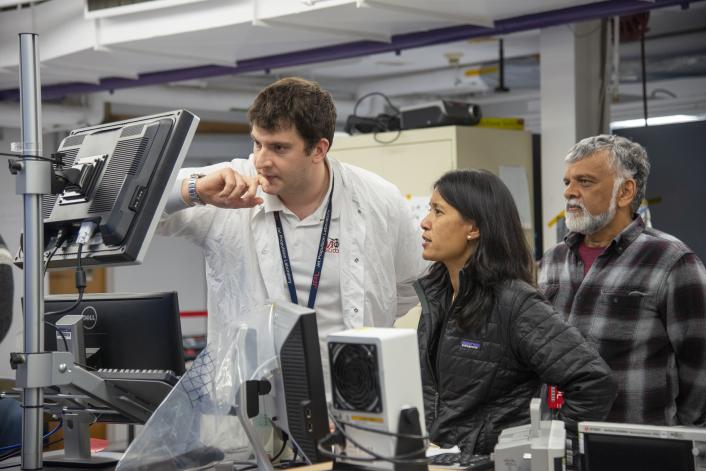
MiMi Aung:And it really was a fun job.
Jim Green:We’re moving into that era where humans will be walking on the surface of the Moon and then on to Mars. We’re going to want high resolution video, data, voice, and that requires these kind of communication systems for us to investigate. So that’s a great step.
Jim Green:So I was always a big proponent of technology demonstrations. All right? So that gets us to I think the next huge step in your career. How did you get involved in building that helicopter for Mars?
MiMi Aung:(laughs) Oh, yes. That’s another major technology infusion activity, very motivated, very driven, you know, for the future. So, yeah, at the time the helicopter concept was born or revived, I was the deputy manager of the autonomous systems division. So I remember, actually, there was a tour of our division by our prior director, you know, Dr. Elachi. And one of the demos we showed was some drones being used to demonstrate autonomous navigation algorithms, OK. This was just in a room with drones. And on the way out, he said to me and René Fradet who was the deputy director of the engineering and science directorate at the time.
MiMi Aung:And so he turned to René and me, and he says, “Why aren’t we doing, you know, things like this at Mars? Why aren’t we flying at Mars?” So, from the division position, we connected Dr. Elachi with Dr. Bob Balram, right, who had done research at JPL on, you know, Mars helicopters in the 90s. And so, Bob and Dr. Elachi and Dr. Jakob van Zyl, who was you know, the associate director of strategy at the time, and they kind of, you know, quietly said “Hmmm, this, it may be worth, you know, investigating.” Well, over that year, Bob’s analysis did show that perhaps with the advancement of technologies now, you know, his research was in the 90s. Now, in the 2013 era, technology maybe may have advanced that maybe we can build an autonomous system light enough that we could, perhaps build the Mars helicopter.
MiMi Aung:And then once it started to mature, it looks like it is possible, may be possible, still may be, we started to put more funding into that. And that was about the time I joined from the autonomous systems division deputy manager position to leading the Mars helicopter. So I joined Bob and the team. And then we started growing the team from there. And it was still internal, we first demonstrated that we could lift with a little 1/3 scale vehicle, that was about the time that I joined in 2014. So from there, I was still, you know, keeping my other job as the in the autonomous systems division management position and kind of going part time. And it was an interesting, again, pivot, because it was hard to tell where it was going.
Jim Green:Well, you know, about that time, Charles Elachi, you know, loved that idea, gave me a call, I was the head of Planetary, of course, at NASA Headquarters, and said, “Jim, I want to helicopter on Mars. And, you know, how can we make that happen?” And I said, Charles, well we’re going to put out a call for instruments on what now is Perseverance. I said,”You must propose it, I can’t just tell you to go do it.” All right. And indeed, JPL put together a fabulous proposal. And eventually, as you know, we we said, let’s do this. A wonderful tech demo, a wonderful opportunity for us to move forward.
MiMi Aung:We really started with the question of whether it was possible. And so the way we started is, we started with a fairly compact team. And one of the, you know, first thing is to really grasp the concept and map it down.
MiMi Aung:And I remember, I think, one of the first meetings saying, “Look, all of us have the ability to, enabling position to make this happen. But each of us also have the ability to bring this thing down, literally.” And so that was just a principle we all worked on that if we ever made a decision that was great for just our, our own area, but are not aware of what it is, it is so easy to really destroy the entire system. And so that’s the fundamental principle that we followed from that day one, I remember that meeting, I said “All of us have to be system engineers, as well as we have to be as the best we can in each of our areas, or else, it just won’t work.”
MiMi Aung:And we were also, also jointly so excited and passionate, really, from day one about this chance to fly something in the atmosphere of another planet outside of Earth. And that passion was really deep in all of us. And it goes all the way from not just the technical, you know, technical excellence that came out of each of us. But the personal dedication. I mean, there were a lot of people that made personal career choices.
MiMi Aung:So the job I was talking about the deputy division manager position, I was part time on it, but after a while, it you know, [the] helicopter really grew and you know, need it all, you know, one’s attention. And it was the most uncertain job for you to walk away to the other one. But those are examples. And there are many of us, and so many people, you know, put off their honeymoon for seven months.
Jim Green:Wow.
MiMi Aung:And somebody cancelled a vacation on the spot because there’s tests that needed a few days. And his flight was in a couple of days. And he just said, “Nope, I’m not getting onto that plane to Taiwan, you know, I’ll put off the trip.” And it’s all driven by this opportunity to add that aerial dimension to space exploration.
Jim Green:Well, as you said, you and your team made it happen. It was as you made these major increments and demonstrated more and more. We were going to keep going. So long as you were successful, you were going to get the green light.
MiMi Aung:This is the beauty of the NASA culture, everybody just chips in, and gives their very best. And there was so many technical challenges that we all overcame, but the reason we did was we thought together, and we solved together.
Jim Green:Well, you know, as head of Planetary, I saw that all the time. You know, it was almost like we were doing miracles, one right after the other, you know, at the centers and the missions we were accomplishing. And it really is all about that team effort, it all about is that vision that everyone gets on that wavelength and then works as hard as they do to make it happen.
Jim Green:When you know, the first flight of Ingenuity took place on April 19. Now, if it wasn’t for the pandemic, I would have been there.
MiMi Aung:Yes.
Jim Green:As you probably know. But what was that moment like? I mean, I saw it from afar. And and I was I was jumping up and down with the best of you. But what, what was it like? How did you feel when it really took off?
MiMi Aung:Oh, it was, it was phenomenal, really, you know, and the thing that I didn’t realize until the day is coming up to it, well maybe I realized that it really hits you is you really had to be prepared for every possible outcome. So until that moment, right, you have three or four scenarios, right, ranging from “it didn’t work, it didn’t start flying and we have to try again” to “it flew but crashed” to “it flew and landed exactly the way you thought it would.” And there is no way of telling where it was going to be.
MiMi Aung:Because we’ve done all the simulation. We’ve done all the tests on Earth, and it really, you know, should work, right? We had no doubt. And so, so there was a whole range of emotions that you’re preparing for, right? And you have to, you know, just be ready for everything. That’s what engineering is, right? You analyze, you design, you test, it’s gonna work, but until you go over that threshold of really doing it, you know, you don’t know the results.
MiMi Aung:So for me, it was it was really exciting. And they were getting hints we were starting to get about you know, the event reports that were starting to come down and they were looking nominal, right, like, hey, it looks like it started out right. And I think Håvard and Michael were reading what visibility we have and we were starting to smile. But for me the thing that hit it was the altimeter plot. Once I saw the altimeter plot that just shot up to the three-meter altitude and then very quickly coming down. I think that’s the point I jumped up, I couldn’t can’t stay anymore. So yeah, because at that point, you say “Wow, we’ve nailed it.” You know, we promised NASA right, at least one flight, right. So there was our 100% success flight.
MiMi Aung:And whenever there were difficult moments, what got us going forward was this dream of it flying at Mars, right. And so really, for me, the most important flight. There are beautiful, much more challenging flights going on, as we, you know, that we have proceeded on with, but I think the first flight will be ever, forever, will be the most important flight. It was a dream come true moment, and not just even dreams, like, you know, when you work for a reward, you know, this is like the absolute definition of a reward right, in every dimension.
Jim Green:It was indeed beautiful. I agree. Well, you know, to me, as you moved on to other flights, you also ran into flight number six. And that was pretty exciting. Can you tell us a little bit about what happened?
MiMi Aung:Yes, so flight number six was when we had a very long distance flight, right, and I’m trying to remember, about over 200 meters, you know, kind of flight. And then at the end of the flight, we were making maneuvers, you know, to turn and to take color pictures to construct stereo imaging, and then, in fact, come back a little bit, about 50 meters back and then land. So it’s, it’s very sophisticated, you know, a large distance, and then almost a little slight U turn, and then to land. Well, at the end of the long the first long leg, right? We took some color image, we took a color image, and just the activity, the increased activity on board triggered a time tagging-issue on the black and white camera, the navigation camera.
MiMi Aung:What happened was because the onboard estimations were off, right, as you know, where we were actually were versus, you know, where what the camera time-tagging, it was telling, it became a rugged flight. And so, the vehicle thought, you know, these errors, because you’re going like large errors, and I have to be here, but I’m here and there was a lot of confusion. So, flight control stability margins were stretched, but it’s still within, it stayed stable, you know, the vehicle stayed stable, and the vehicle landed, and at the end, it ended up within five meters of the targeted position.
MiMi Aung:It really was quite a stress test. And it was great because, because it all did, you know, work and Ingenuity, again, it landed safely within five meters, which is fantastic performance.
MiMi Aung:We really got a lot of really great data on the performance of our vehicle, so yes.
Jim Green:Yeah, you ran into an anomaly, but indeed, you were able to then overcome that. And, as you say, learn an enormous amount from that. Congratulations, that that was really exciting.
Jim Green:You know, for young ladies who have an interest in science, technology, engineering and mathematics, and they all may be listening, what would your advice be to give them the gravity assist they need to step into your shoes one day?
MiMi Aung:Oh, my advice? Oh, follow your heart. And I know it sounds motherhood, apple pie, you know, but it matters. I think it’s important for everyone to really figure out what makes you passionate, like what do you want to make happen for the world? Right? Or for whatever, what do you really want to make happen? And it turns out, each of us have different, you know, callings, you know, for me, it’s, you know, first-of-a-kind systems that answers big questions or big causes, okay, so at NASA is first of a kind systems and my passion has been, you know, is there life elsewhere? Are we alone and as an engineer, you know, things that I can do to help make systems you know, that really will help answer the questions. So for all these 30 years, you know, I’ve been here, that’s what’s drawn me, okay? So, but for you, you know, all of you out there, right, the next generation, it will be your own quest that draws you, okay?
MiMi Aung:But you really have to find what really draws you. Once you find that, find an intersection of what you can do for that cause and an area that, that you’re good in and that you love to do. And I really believe it has to be an intersection of what you love to do, what you’re good at, and what is needed in the world that you really believe in. And once you find something like that, go after it, you know, go after it, and don’t don’t say, “Oh, I’m only this. Or you know, I don’t have opportunities.” One step at a time, really, you can get there, if you believe in it, you know, and it comes all the way from talking to people or, you know, searching for more information and starting at even a remote opportunity that you can work your way up to get there. And because you’re passionate about it, you will find a way.
MiMi Aung:Don’t let anybody talk you out of it. Don’t let yourself talk out of it. Don’t say I’m not good enough. Or sometimes, and I have to share with you, you know, when I was younger, it’s like, “It’s just me, it’s just me,” right?
MiMi Aung:Don’t let that happen to you. You will find a way, you know towards achieving that. So that’s my advice. (laughs)
Jim Green:No, I think that’s great advice. I can’t agree with you more. Well, MiMi, I always like to ask my guests to tell me what was that event or person place or thing that got them so excited about the being the engineer that they are today. And I call that event a gravity assist? So Mimi, what was your gravity assist?
MiMi Aung:So Jim, I think more of a solar electric propulsion type person.
Jim Green:Little pulses along the way, yes.
MiMi Aung:Pulses all along the way. And I think my first you know, big one, of course, is finding that I really wanted to work in space exploration or space-based systems. And never, you know, knowing… growing up, I didn’t know if I would have that opportunity. And then once you know that, that that really coming on driving on lab to JPL, NASA JPL, you know, for the interview. And that was a huge moment for me.
MiMi Aung:And, and really, once I got to talk to the people who were doing space exploration. I think that was a huge maybe there’s a gravity assist moment, because to me, it was more like Well, I’m here like I really, it could be as cool as I thought it was going to be and if I think that’s where I became mentally committed. I think you need that gravity assistance. So that was one. And then my, you know, this Block-V receiver group, I know I go back to it a lot and but it really was how I got grounded right into how do you turn these algorithms that I was learning in school to a really big system.
MiMi Aung:And that really propelled me into and this is where I owe, you know, a majority [of] that to my first supervisor, you know, Ernie Stone, because he just didn’t lead he taught us, all of us in the group, what it took, it takes a whole village, it takes every engineering discipline, you know, all the way, right, from somebody soldering, you know, all the way to, you know, somebody climbing up the antenna to do something to you know, they’re all the fancy algorithms or whatever, you know, everybody really had to contribute together. So that was another huge assist, and probably gravity assist, but maybe over seven years. (laughs)
Jim Green:(laughs)
MiMi Aung:And then entering the world of now the spacecraft side, going from the ground side to the spacecraft side. And then the other gravity assist turning moment was really… again, I keep going back into you have to be passionate, you have to love what you do. Once on the spacecraft side, after being there, I just became obsessed with wanting to push the autonomous capability of systems. And so being obsessed with that, and then of course, you know, and that led into everything I do. And then ultimately, helicopter, Mars helicopter is an example of where I actually got to then dip back down into the details to make one of those, you know, future capabilities happen.
MiMi Aung:You know, I literally grew up in NASA JPL, right, walking in as a 23-year-old. And I am, you know, as I move on to take, there’s a next big thing that I want to pursue as I move on, you know, like somebody who grows up as you move away from your village to go on to the next, you know, village or whatever. It’s, it’s, it’s, it’s a, it’s emotional. And I guess I had this fear of, you know, this place that I’ve loved so much, and all the people I’ve bonded with. I just hope I won’t be forgotten. So the thing I want to say…
Jim Green:I don’t see how that’s possible.
MiMi Aung:So the only thing is, please don’t forget me. I think that’s what I want to leave with. So…
Jim Green:No, no, no, no, no, MiMi, you’re well placed in history. And I certainly will not forget you.
Jim Green:So MiMi Thanks so much for joining me and discussing your fascinating career.
MiMi Aung:Thank you. And it’s been a fantastic conversation. Thank you so much, Jim.
Jim Green:Well join me next time as we continue our journey to look under the hood at NASA and see how we do what we do. I’m Jim Green, and this is your Gravity Assist.
Credits
Lead producer: Elizabeth Landau
Audio engineer: Manny Cooper













